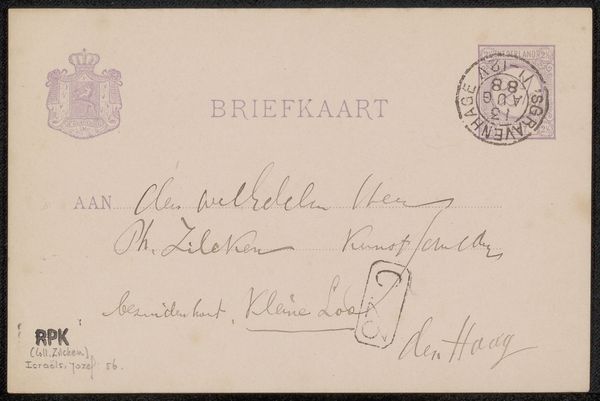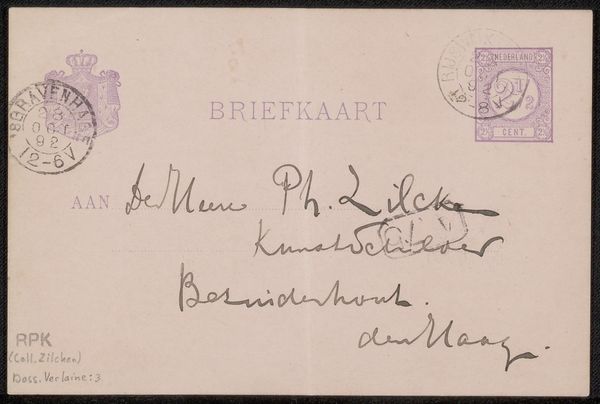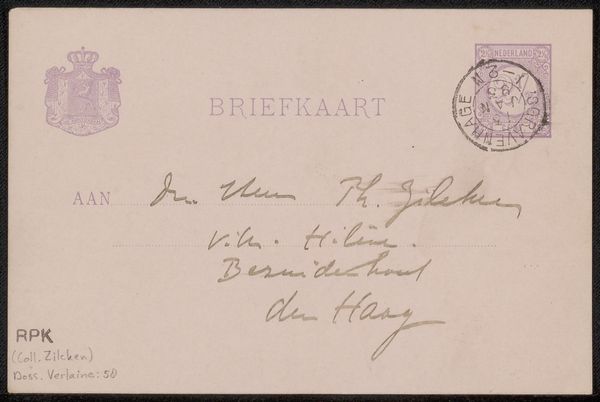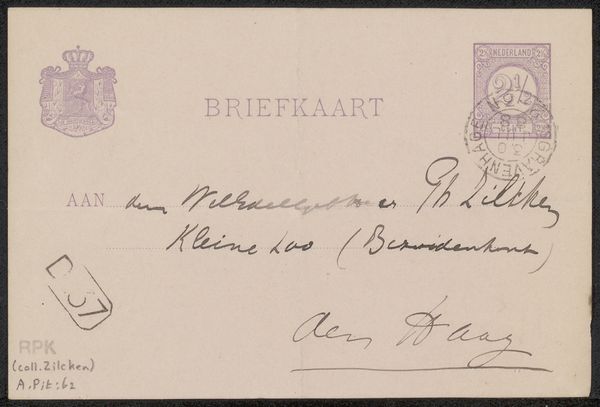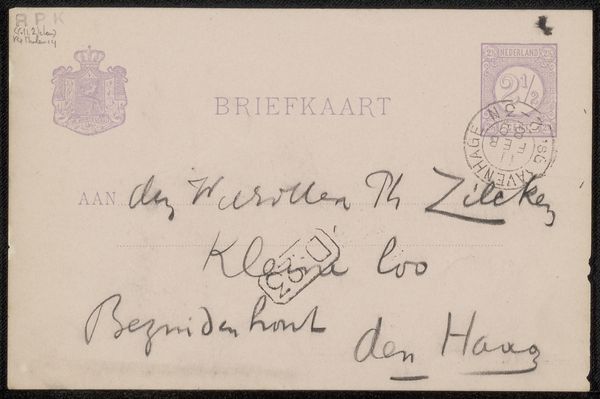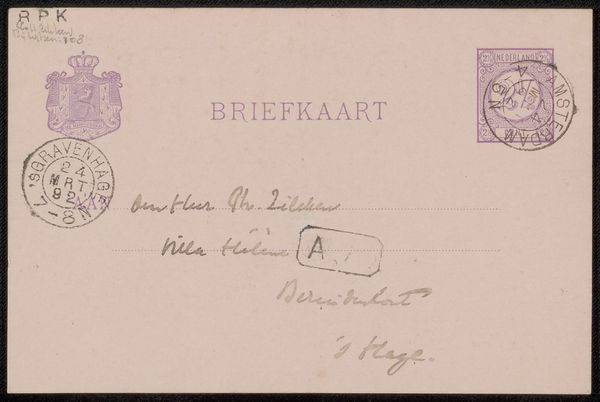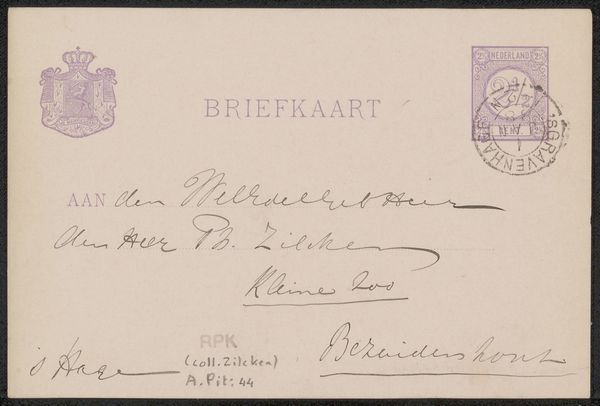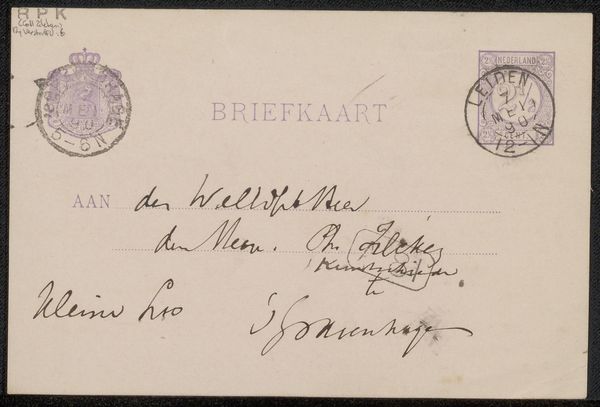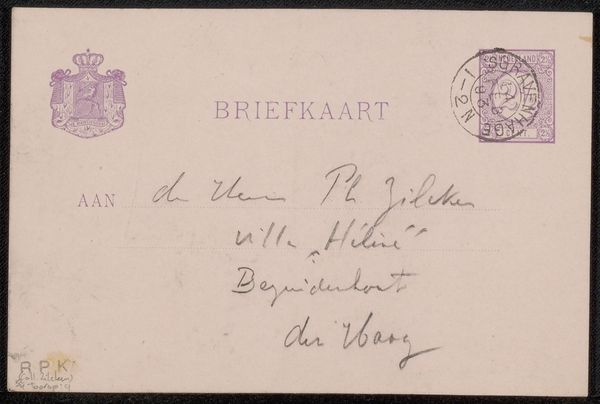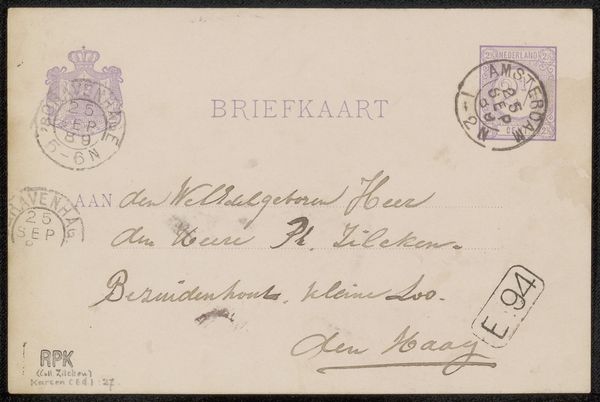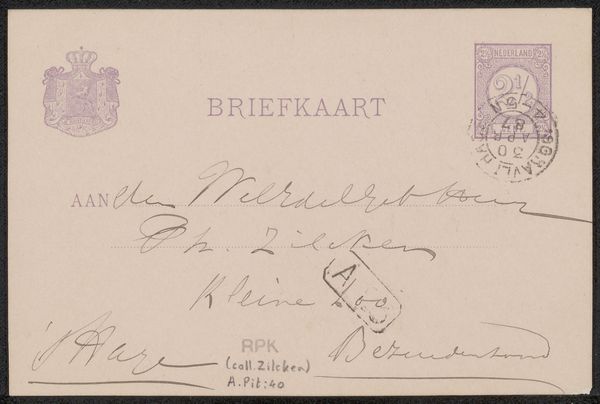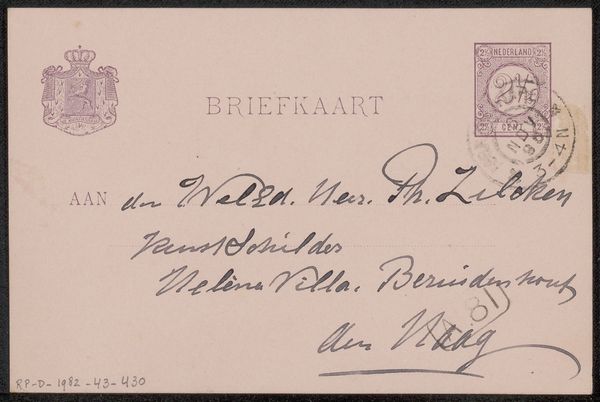
drawing, paper, ink, pen
#
portrait
#
drawing
#
hand-lettering
#
hand drawn type
#
hand lettering
#
paper
#
personal sketchbook
#
ink
#
hand-drawn typeface
#
ink drawing experimentation
#
pen-ink sketch
#
pen work
#
sketchbook drawing
#
pen
#
post-impressionism
#
sketchbook art
Copyright: Rijks Museum: Open Domain
Editor: Here we have Willem Witsen's "Briefkaart aan Philip Zilcken," possibly from 1887. It’s an ink drawing on paper, a literal postcard. There’s something intimate about seeing a message intended for only one person; it's almost like we're intruding on a private moment. How do you interpret this work as a sort of historical artifact? Curator: I see it as an important window into the artistic and intellectual circles of the late 19th century. A simple postcard becomes a document, right? Zilcken was, after all, a significant figure in the art world himself. So the postcard is no accident: it's about power, social relationships and artistic identity. Consider the Post-Impressionist movement emerging at the time – what did the ability to communicate through images mean to artists then? Editor: So it's not just a casual correspondence, but a consciously crafted exchange? The way Witsen wrote could have artistic undertones, perhaps even acting as an artistic performance for Zilcken? Curator: Precisely! Think about who had access to literacy and the ability to create and send images. The act of writing itself was charged. What’s fascinating to me is that something like the Royal stamp could be used today to examine issues of nationality, authority, and the very construction of identity during that era. Do you see other places where Witsen calls those themes to the surface? Editor: The stylized, almost calligraphic quality of the handwriting perhaps elevates it beyond just a quick note? It definitely encourages you to see the image differently, focusing on more than just its face value, right? Curator: Absolutely. This piece encapsulates a critical juncture – it uses the language of everyday communication but hints at the shifting cultural values. It invites a reflection on how class and education played a role in how art was created and distributed, but also in the social hierarchies embedded within these seemingly simple exchanges. Editor: This conversation changed the way I saw this postcard, before it felt like just something cute to find at a museum, but there's all kinds of different meanings and cultural baggage you can associate with this artwork. Curator: Indeed. Objects like this humble postcard aren't passive carriers of information; they’re active participants in shaping and reflecting the complex narratives of their time.
Comments
No comments
Be the first to comment and join the conversation on the ultimate creative platform.
